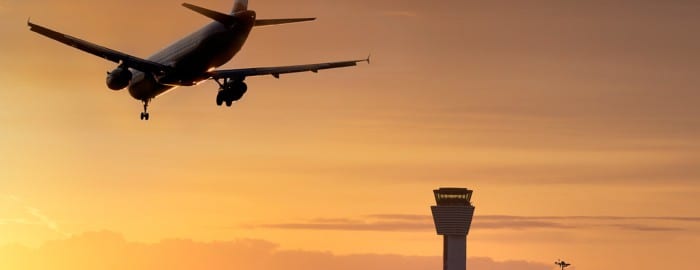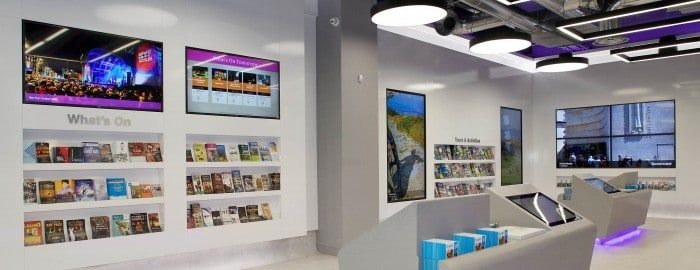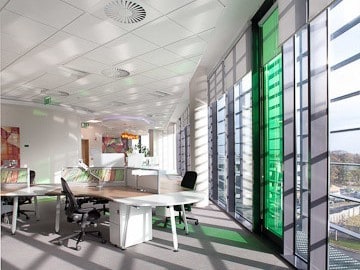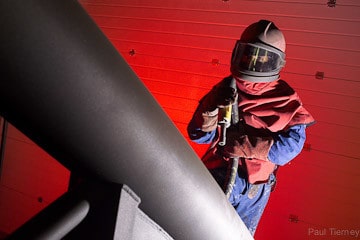Irish Aviation Authority Vertical Control Tower
The tallest occupied structure in Ireland is the IAA Vertical Control Tower designed by Scott Tallon Walker Architects. It encapsulates the heroic symbolism of many aviation buildings. The tower stands at 87.7m over the surrounding hinterland. Its profile is slender with an occupied control center at the top. The structure is reminiscent of the many emblematic aviation buildings. The original Dublin Airport buildings designed in the 1930’s by Desmond FitzGerald. It is designed as a curved building with tiered floor levels is reminiscent of ocean liners, the design conveys the excitement and luxury of flight in the thirties and forties.
Many airport buildings romanticize flight and travel. The architecture of flight symbolizes technological advancement. Think of Eero Saarinens 1962 TWA Flight Centre in New York. Saarinens’ building pioneers the use of thin shell concrete construction. The roof mirrors a wing profile. The message is clear, technology conquers all. Norman Fosters Stansted airport is another example. Stansted is masterpiece of rigorous architectural logic. Every component delivers an automated solution to enable huge numbers of people travel with belongs to every corner of the globe.
The vertical control tower continues in that tradition. It is a white shining torch to greet visitors.
The simple architectural expression masks quite complex engineering. Arup Structural engineers provided the engineering design for the project. The tower used a tuned mass damper reduce the sway in the structure. The damper is, in essence, like a pendulum. The natural sway of the building due to wind is counteracted by the damper. The damper allows the structure to remain slender, elegant and stable.
From a photographic stance the project required planning and a knowledge of airport operations. This experience had been gained from working with the Dublin Airport Authority and other organizations with specialist security and health and safety requirements.
The project has deservedly won numerous awards and is a significant addition to the landscape of Dublin.
Visit Dublin Architectural Photography
Architectural photography for Visit Dublin on Suffolk street. Visit Dublin on suffolk street is a visitor centre for tourists. The centre provides information for all those interested in finding out about Dublin. It also offer some information of tours outside of Dublin and in the rest of Ireland. Its primary focus is on Dublin City and the greater Dublin Area. The photography shows of the space completed recently as part of a commercial fit-out contract. The design is clean and spacious with the multiple display screens used to create a bright and vibrant environment.
Interior Photography for HKR Architects at MSD Ireland
Interior photography for HKR Architects at MSD Ireland ( copyright images, all right reserved).
www.hkrarchitects.com
Corporate Photography for Irish Industry
This project was for a corporate client in the transport industry. Specific images of infrastructure and people formed part of the brief, it was produced over a two day period using natural and artificial lights .
Industrial Portrait Photograph for J.S. McCarthy Cork
The images show grit-blasting of a bridge in Carlow, the blasting was commission to clean the steelwork prior to painting the bridge. The photographic idea was to create an interesting industrial scene by using artificial studio lighting. The portraiture was completed as part of their brochure photography which involved photographing people and locations across Ireland including Dublin, Cork and Carlow.





